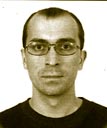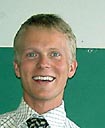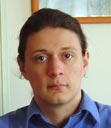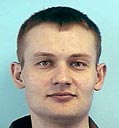Nikola MAKOVEC
L.A.L, Orsay
makovec@lal.in2p3.fr

For my Ph thesis, I am working on D0, one of the two detectors operating at the TeVatron collider at Fermilab. The topic of my thesis is 'Search for the Higgs Boson in the bbnunu channel'. I'am presently working on Energy Flow (which combines tracking and calorimeter information) in order to improve the dijet mass resolution.
Alberto MAROTTA
Univ. of Napoli FEDERICO II
alberto.marotta@na.infn.it
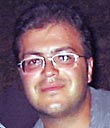
I'm attending the second year of my Ph.D. thesis work in the framework of the OPERA experiment; which looks for a direct evidence of the mu->tau neutrinos oscillation, by observing the tau neutrino appearance in the CNGS beam (which is initially composed of mu neutrinos), through the direct observation in nuclear emulsions of the decay of tau leptons, produced in neutrino tau charged current interactions. I worked on the simulation of a veto system to minimize the effects of fake events, generated in the not istrumented parts surrounding the OPERA detector. I'm collaborating to the simulation and setting up of a test beam that will be held in the DESY laboratories to study the electron identification in emulsions. This to improve the electron-pion identification, fundamental to evaluate the sensitivity of the experiment in studying the mu->e neutrinos oscillation.
Lucia MASETTI
Johannes Gutenberg Universitaet Mainz
lucia.masetti@cern.ch
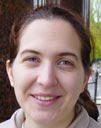
For my Ph.D. thesis I am working on the NA48 experiment at the CERN SPS accelerator. I have studied rare radiative neutral kaon decays in order to check the predictions of the chiral perturbation theory, obtaining a first upper limit for the branching ratio of the Ks->pi0-gamma-gamma decay. At present I am working on the analysis of the form factors of the Ke4 decay of charged kaons, which allows to measure the s-wave pi-pi scattering length. I also worked on the L3 trigger system of the NA48 experiment, in order to adjust it for the high intensity neutral kaon and hyperon run which was dedicated to rare decays studies.
Anselmo MEREGAGLIA
ETH Zurich
anselmo.meregaglia@cern.ch

For my Ph.D. thesis I am working on ICARUS, a liquid Argon detector, ideal for rare event search such as proton decays and neutrino interactions, which will be installed at LNGS. My thesis will deal mainly with solar and supernovae neutrinos, whereas so far I have been working on the software used to reconstruct events.
Shulamit MOED
Univ. of Geneva
Shulamit.Moed@cern.ch

I am a PhD student currently working for the ATLAS silicon tracker and taking part in ATLAS top physics studies using simulated events. Geneva university is one of the production sites for the ATLAS silicon tracker Endcap modules. As a member of the Geneva group I am taking part in the quality control of the module components before assembling them to a module, tests during the different stages of assembly and tests of the modules when they are completed. In parallel to that I am working on the top quark mass reconstruction where a (t tbar) pair decays via W bosons into (lepton neutrino jet jet b bbar). These events provide a good environment to study the b-tagging algorithm performance as well and later on I will use them for calibrating the b-tagging efficiencies.
Aweys MOHAMED
The University of Liverpool
mohamed@mail.desy.de

For my Ph.D. thesis, I am working on H1, one of the two multipurpose detectors currently operating at HERA ep collider at DESY. In an ep collider, photon-photon scattering is the dominant production mechanism for muon pairs at high energetic scales. Therefore, muon pairs, which produced via this QED process,form the major background source for almost all processes with muons in the final state. Thus understanding this QED process and the precise determination of its production cross-sections in the electroweak (EW) interaction in as large phase space as possible is very important and that is the topic of my thesis.
